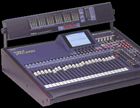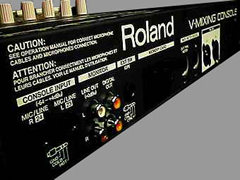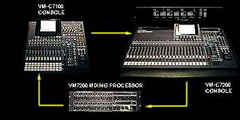 |
|
|
|
| |
|
|
|
|
|
DIGITAL
MULTITRACK
RECORDING |
|
MIDI
COMMUNICATION
|
| |
|

| |
 |
||
 |
| SYSTEM CONFIGURATION | |
 |
The
VM-7000 system includes two components: VM Mixing Console and VM
Mixing Processor, that can be combined depending on the user needs. |
|
|
|
 |
The
VM-C7200 console is equipped with 24 faders that control up to 48
channels divided in 2 layers. This console is about a 25% more expensive
than the compact model, but the access to the channels management
is more easy and fast. |
|
|
|
 |
Both
models feature the same rear panel. |
|
|
|
 |
Usually,
a VM-7000 system includes a VM Mixing Console connected to a VM
Mixing Processor (that also provides I/O connectors). Moreover,
an R-BUS optional I/O expansion board can be connected to the VM
Mixing Processor. R-BUS is the Roland proprietary digital format
protocol, but interface boxes converting R-BUS signals to AES/EBU
(Roland AE-7000) or to ADAT/T-DIF (Roland DIF-AT) formats are also
available. |
|
|
|
 |
Due
to its flexibility in terms of set up, VM-7000 system can provide
a larger numer of faders in-line. |
|
|
|
 |
To
increase the number of audio channels, two VM Mixing Processors
can be connected to a VM Mixing Console, providing a total of 94
channels. |
|
|
|

